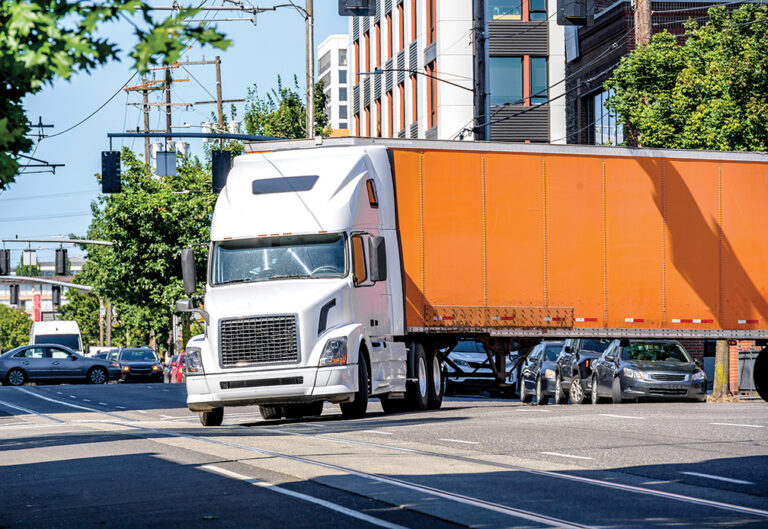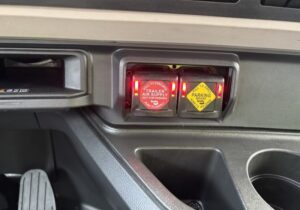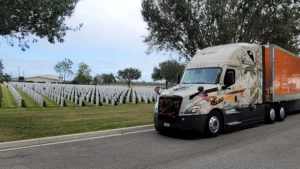Every week, it seems, there’s another story about a truck and a bridge. One week, it’s a tractor-trailer damaging a suspension bridge by hitting a crossbeam with the trailer; the next, it’s a commercial motor vehicle attempting to cross a pedestrian bridge.
Many of these stories make us shake our heads and marvel at the mental gymnastics the driver had to complete to put the truck there in the first place.
Often, the answer is that the driver followed directions provided by a GPS routing program.
That’s the excuse used by the driver of a tank truck loaded with calcium chloride that smashed through the wooden deck of a pedestrian bridge over wetlands in Angola, Indiana, in mid-November. The walkway parallels Indiana Highway 127, and the bridge was just wide enough to accommodate the vehicle.
In the old days of trucking, professional drivers carried a road atlas. The gold standard was the Rand McNally Motor Carriers’ Road Atlas, which not only featured individual state maps but also clearly covered and explained the National Highway Network (something many drivers still don’t understand).
The McNally atlas also had separate sections that listed low-clearance locations, restricted routes, and state-specific weight and dimension regulations.
Some drivers preferred the fancy spiral-bound version with laminated pages, while others liked the plain paper version on the grounds that it was cheaper to replace each year when the new one comes out.
It’s a new day, however, and drivers are more tech-savvy than ever.
Those atlases are still available, but many new drivers get directions from the routing software their carrier uses, along with their dispatch management system. Others rely on GPS devices that can be mounted on the dash, and newer trucks come with such systems already installed with dashboard display screens. For other drivers, smartphones are the answer because they can download the latest routing apps and, thanks to Bluetooth technology, can send maps and information directly to the display screen in the vehicle.
The most important thing to remember about route guidance systems is that none of them should be trusted 100% of the time. Some apps and programs update automatically, while others don’t update unless the owner manually requests it. On the road, conditions can change quickly, and even “updated” software can be wrong.
Many drivers prefer to purchase commercial vehicle versions of GPS devices. Rand McNally makes an excellent one, as do other familiar names like Garmin and TomTom. Other manufacturers are less well known, so make sure the unit you purchase has software specific to trucking.
For drivers who prefer to use their smartphone instead of relying on a stand-alone GPS device, there is a long list of apps available at Google Play or Apple stores, many of them free.
Google Maps is a tested and true app that provides very good directions — for cars and bicycles. The app is not designed for commercial motor vehicles or RVs, and leaves out information that could be crucial. Apple Maps is a similar program that works on iPhones and equipment running Apple operating systems.
Trucking-specific apps do a better job of routing and can provide information important to truckers, such as the locations of truck stops, weigh scales and more. Some allow the driver to enter weight and dimensional information so that routes that aren’t suitable can be avoided.
TruckerPath has been around for years and is trusted by many drivers. TruckerTools is another well-known app.
TruckMap is gaining in popularity. The makes claim it is the only app with “truck optimized GPS routes” along with location information on weigh stations, parking areas, fuel stops and even Walmart stores.
SmartTruckRoute is similar to the others, and Hammer is a GPS app sponsored by the website TruckersReport.com.
Websites such as the Rand McNally homepage and TruckersReport.com feature routing programs that are accessible online without downloading any programs. Turn-by-turn directions can be downloaded or printed from the website.
Whatever system you choose, understand how the program works. Some require a constant internet connection and may not work well in a moving vehicle. Others communicate through your phone’s network system and may consume data at a high rate. If your plan allows unlimited data, you won’t incur extra charge;, however your data speed could be slowed when your usage reaches a predetermined threshold.
Programs that provide turn-by-turn directions are generally the most convenient, but they can also be the most problematic. That’s because it’s tempting to simply rely on the app rather than checking the entire route prior to the trip. By the time the driver finds out about a route restriction, it may be too late to change to the most efficient route.
For this reason, some drivers still carry the tried-and-true road atlas. The route recommended by the software or app can be checked against the low clearance or restricted route sections to eliminate issues. Some drivers compare data from two or more apps to make sure they’re getting all the information needed.
Other sources for determining low clearances or restrictions include state-specific DOT websites and some trucker forum websites.
Keep in mind that reported clearances can change. New pavement on the road raises the surface and can shorten the distance to the overpass above. Lane changes that route lanes toward a lower part of the bridge can cause problems. In states where snow and ice can build up on the road surface, clearances can be reduced.
Many locations have signs announcing height restrictions, but sometimes those signs aren’t updated immediately when conditions change.
Then, there’s the tried-and-true method of watching another truck go under the bridge. Just make sure the truck you follow isn’t shorter than the one you’re driving.
Finally, there’s simply no substitute for common sense. If the bridge looks too low or the road too narrow, stop and make sure before any damage is done. If a clearance is close, creep underneath, and keep an eye above.
And, most importantly, if the road surface is made out of wood planking, there’s a good chance it wasn’t made to hold 40 tons of tractor-trailer.
Cliff Abbott is an experienced commercial vehicle driver and owner-operator who still holds a CDL in his home state of Alabama. In nearly 40 years in trucking, he’s been an instructor and trainer and has managed safety and recruiting operations for several carriers. Having never lost his love of the road, Cliff has written a book and hundreds of songs and has been writing for The Trucker for more than a decade.















